I’ve often heard people argue a lot when it comes to skimboards. Though they might look the same as the surfboards, skimboards have no steering fins making it more challenging. It might get a little confusing when purchasing the best skimboard but a skimboards size chart will come in handy in this regard. It will help you choose the right one depending on the size, your age, and a lot of other factors.
Skimboards are best when it comes to maneuvering, speed, and having a thrilling experience. But no matter what, knowing the best size for you is a necessity since it will affect your overall performance. Before purchasing one, you may ask yourself “what size skimboard do I need?” Don’t worry I’m here to help you choose the right option. Let’s discuss some of the things you need to look in a skimboard.
Factors That Impact Skimboard Sizes
There are several factors that determine how to size a skimboard. Some of them include material, rocker, weight, thickness, and shape, among many more. We will discuss each of them in detail. Let’s get started!
1. Materials
You probably know that materials used for construction have everything to do with the performance and durability of skimboards, bodyboards, and surfboards. It is essential you know the material of your skimboard so as to get the results you desire. There are five common materials used in skimboards. They include traditional wood, Kevlar, graphite, fiberglass, and carbon fiber.
-
Traditional Wood Board
It is the most common board and the cheapest one in the market. Its use is primarily for the shore or what’s called flatland skimming, but that doesn’t mean you can’t take it in the water. The wood boards often have a polyester resin or epoxy coating over them.
It will depend on whether you are making a board for yourself or buying one. In many cases, people like applying resin over their skimboards. Just make sure that you use a good amount of it. In addition, the wood is from cherry, balsa, and many more. The traditional wood boards are best for beginners, are heavy in weight, durable, and work well skimming on a thin layer of water.
-
Graphite Board
These are the perfect boards for beginners. They have exceptional planing qualities which makes skimming more easily. Graphite boards are known to last for long.
-
Fiberglass Board
They are great, lighter, and faster, have a strong outer shell, and have more control in the water, unlike the wooden board. If you are looking for a skimboard that is better for doing tricks both in the sand and in water, then the fiberglass board is the best option. You can find them in different sizes and shapes like pin, square, and swallowtail.
-
Carbon Fiberboard
They are the most expensive boards but better when it comes to being stiff, light, and fast. In short, it is a better choice compared to fiberglass. You can easily perform well in water and on the sand. They are best for professional riders who love riding big waves.
-
Kevlar Board
It is slightly stiffer and cheaper than carbon fiber. With this board, you can expect better impact resistance and strength. You need to know that Kevlar is more impossible to work with and are best left out for the experts.
2. Shape
As a skimmer, you want a shape that defines who you are and one that enhances your athletic ability. The rocker is defined as the curve of the head of your skimboard. This determines how easily you can get from the sand to the water. So, the more curve the better.
There are five common shapes; Proto, Thomas, Sacramento, Raza, and streamline. Proto has a wide waist and a narrow tail and nose which provide a perfect middle-ground for stability and maneuverability. It is best for bank slides and long rides.
-
Streamline
The streamline has a narrow midsection, a large tail and nose, and curving rails. All of these are good for a flat spin speed runs, ollies, small waves, and bank slides. Thomas shape falls between Proto and Sacramento. It has side cuts and a wide midsection which increases stability and straight tracking. It also has a wide nose and tail which provides more control for blunt slides and for ollies.
-
Sacramento
Sacramento has an extra-wide waist. It offers high speed due to its profile on the board. It also has double cuts on the sides that help make an effortless pop and at the same time a straight tracking. Raza is like Sacramento but offers more maneuverability. The tail and the nose offer a lighter swing. The shape is best for maximum pop and doing technical skills.
Remember that the shape of the skimboard plays a major role in skimboard sizing. This comes in when choosing a narrow or wider board and longer or shorter boards.
-
Tail Shape
This is a great determiner when it comes to the shapes and performance of a skimboard. The tail shape is the one that decides how much water you’ll spray and the overall maneuverability of the board.
The most common tail shapes are swallow which is also called the W shaped, pintails, and square tails. The pintails are very stable in the water while the square and swallowtails offer more maneuverability and are good at throwing a bigger spray.
3. Thickness
The thickness of the board will determine how far you will go in the water. Thicker boards tend to travel further in the water but remember the thicker the board is, the heavier its weight will be. Thick boards are less responsive and don’t turn well as thin ones. The good thing about thick boards is that they offer more float than thin ones.
The standard options are 3/4 inches thick, 5/8 inches medium, 3/4 inches tapered, and 5/8 inches thin.
4. Weight
This is the easiest part that anyone can figure out. We all know that the lighter the board the better since it decides on your speed both on water and on land. The experts recommend that you go for the lightest one especially if you are a beginner. This will help you operate the board and do tricks easily.
Make sure to check on the resin as there has been a case where the board may be light due to fiberglass that is not well saturated. So, if you prefer making your skimboard all by yourself, put enough resin.
5. Flex (Layup)
The flexibility or the physical materials of a board are the ones that give the skimboard its structure and the shape profile. More flex on board means it is easier to trim and lighter weight. However, this can cause the board to be less responsive and hard to ride when it comes to technical tricks.
There are three layups; flexy, stiff and rigid. Flexy is the most flexible and has the lightest weight. Stiff is mid flex and mid-weight. Rigid is stiffer and heavier than the others.
So, Here Is the Skimboards Size Chart
Now that you know the factors that influence the board’s size, the question still remains what size skimboard should I get? So, the next step is to look at the size chart. We’ve divided it into all the aspects that can help you determine the proper skimboard. Remember that the size chart will defer depending on the model of the board.
| Size | Weight Range (pounds) | Weight Range (kgs) | Board Dimensions (inches) | Wave Size | Running Speed |
| Double Extra Small (XXS) | Below 80 lbs | Below 36 kgs | 45.00” x 19.00” | All wave sizes | All running speeds |
| Extra Small (XS) | 80 to 100 lbs | 36 to 45 kgs | 48.00” x 19.25” | Small waves | Normal to fast speed |
| Small (S) | 100 to130 lbs | 45 to 59 kgs | 51.00” x 19.75” | All wave sizes | All running speeds |
| Medium (M) | 130 to 150 lbs | 59 to 68 kgs | 52.00” x 20.00” | All wave sizes | All running speeds |
| Medium Large (ML) | 150 to 170 lbs | 68 to 77 kgs | 52.25” x 20.25” | All wave sizes | All running speeds |
| Large (L) | 170 to 190 lbs | 77 to 86 kgs | 52.50” x 20.50” | All wave sizes | All running speeds |
| Extra Large (XL) | 190 to 210 lbs | 86 to 95 kgs | 53.00” x 20.75” | All wave sizes | All running speeds |
| Extra Extra Large (XXL) | 210 to 220 lbs | 95 to 100 kgs | 54.00” x 21.50” | Large waves | Normal to fast speed |
Conclusion
From the above, we’ve seen that a lot of factors determine the skimboards’ size chart. Choosing the right skimboard is not an easy choice. So you need to look at the above chart and know which skimboard and kayak paddle you prefer the best. And if you have children who love skimming and you are wondering what size skimboard for a 12-year-old, then go for a small or extra small.
For adults, the medium, and large are the best options. The beginners can use the medium and large sizes depending on their age. But for the experts, the double extra large is a good choice since they require more maneuverability. Just make sure that you pick a size that you feel is fit for you.
Other than that, the size of your skimboard should allow you to have maximum fun and at the same time do those tricks on the shore and on the water. It doesn’t matter whether you are a professional skimboarder or a novice, with the right size you will be skimming your way up to the bigger waves.
FAQs
1. Is a bigger skimboard better?
Ans. A longer board is ideal when you aim for speed and distance. Skillful skimboarders may choose smaller boards since they are more flexible and allow for easier tricks. These skimboarders also have enough expertise to balance on smaller boards.
2. Should I wax skimboard?
Ans. A generous amount of waxing on the skimboard helps you ride better just like skateboarding, skiing, snowboarding, and surfing. Whether you have an old or new board, you want to wax them to use them at their fullest.
3. How many calories do I burn while skimboarding?
Ans. If you weigh around 180 pounds and skimboard for 30 to 60 minutes, you will burn up to 160 calories. The amount of calorie burn depends on how intensely you skimboard during the session.
4. How can I practice skimboarding at home?
Ans. Your home is a good place to practice skimboarding before you head to the beach. Skimboarding requires balancing on the board, which you may practice with a balance board or a skateboard.
5. Can I skimboard on wet grass?
Ans. You can do flatland skimboarding almost anywhere, including rivers, lakes, puddles, golf courses, ponds, or wet grass.

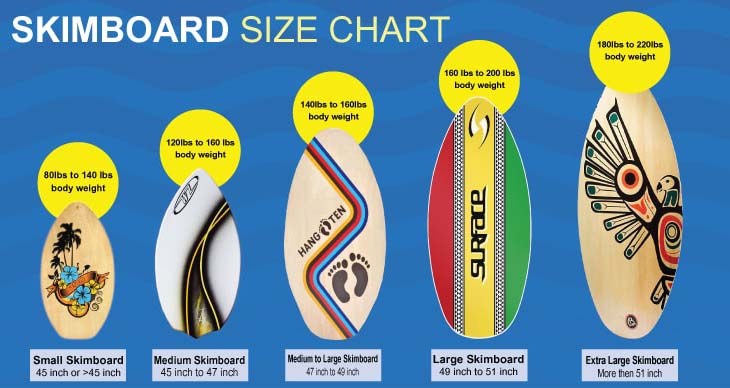
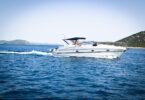

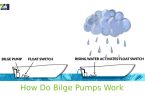
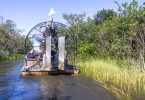
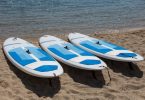

Leave a Comment